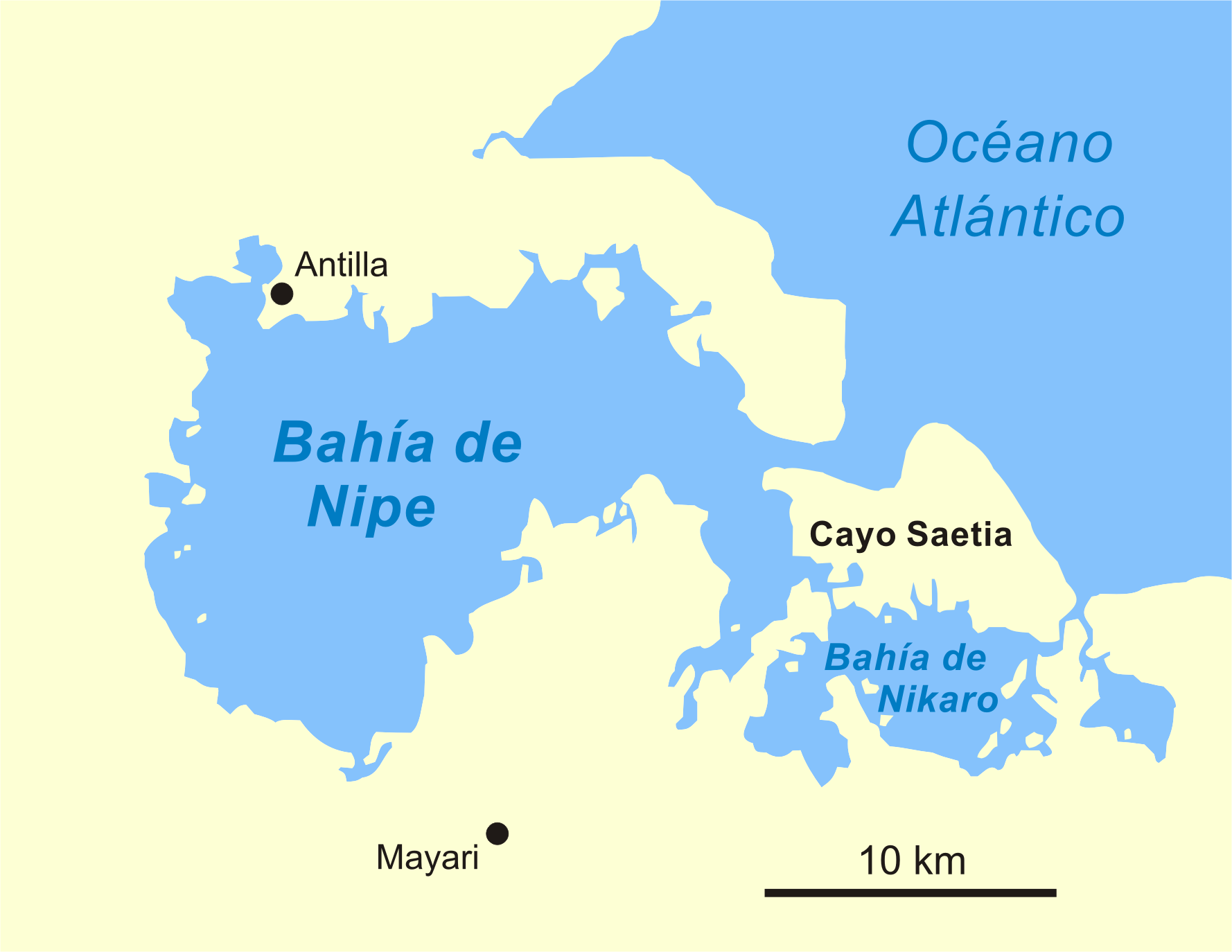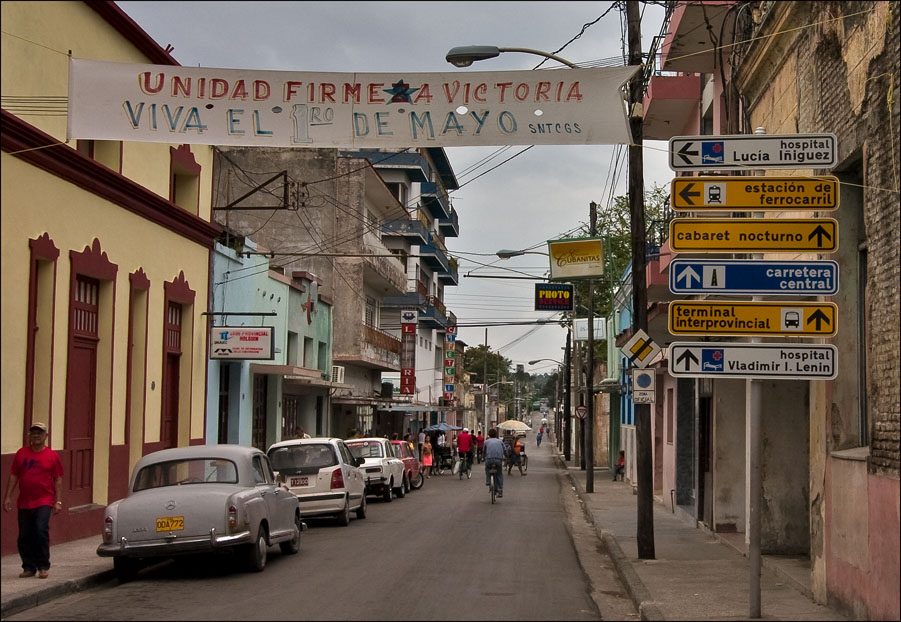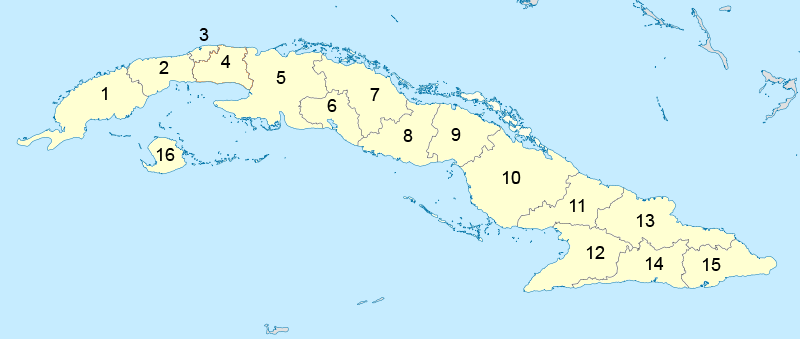|
Guatemala, Cuba
Guatemala, also known as Preston, is a Cuban village and ''consejo popular'' ("people's council", i.e. hamlet) of the municipality of Mayarí, in Holguín Province. History In the first half of the 20th century, the village was a sugar cane processing center owned and operated by the United Fruit Company and named in honor of one of the company's founders, Andrew W. Preston. In the Caribbean, processing centers for cane sugar are referred to by the Spanish term "central". Following the Cuban Revolution of 1958, United Fruit was forced to withdraw and the Cuban government renamed the town Guatemala to symbolize solidarity with the Central American nation. Due to decades of neglect and failure to modernize the mill - not to mention declining global prices for sugar - the mill/central was closed around 1990 and the village went into decline.Personal recollection of Preston by a former American resident and United Fruit employee. Geography The village is located in the Nipe Bay, 14&n ... [...More Info...] [...Related Items...] OR: [Wikipedia] [Google] [Baidu] |
Cuba
Cuba ( , ), officially the Republic of Cuba ( es, República de Cuba, links=no ), is an island country comprising the island of Cuba, as well as Isla de la Juventud and several minor archipelagos. Cuba is located where the northern Caribbean Sea, Gulf of Mexico, and Atlantic Ocean meet. Cuba is located east of the Yucatán Peninsula (Mexico), south of both the American state of Florida and the Bahamas, west of Hispaniola ( Haiti/Dominican Republic), and north of both Jamaica and the Cayman Islands. Havana is the largest city and capital; other major cities include Santiago de Cuba and Camagüey. The official area of the Republic of Cuba is (without the territorial waters) but a total of 350,730 km² (135,418 sq mi) including the exclusive economic zone. Cuba is the second-most populous country in the Caribbean after Haiti, with over 11 million inhabitants. The territory that is now Cuba was inhabited by the Ciboney people from the 4th millennium BC with the Gua ... [...More Info...] [...Related Items...] OR: [Wikipedia] [Google] [Baidu] |
Nipe Bay
Nipe Bay ( es, Bahía de Nipe) is a bay on the northern coast of Cuba in Holguín Province, part of the former Oriente Province.''Merriam-Webster's Geographical Dictionary'', Third Edition, p. 830. It is part of the municipalities of Mayarí and Antilla, Cuba, Antilla. Overview In Roman Catholic tradition, Nipe Bay is where the statue of Our Lady of Charity, Patroness of Cuba, was discovered miraculously around 1600. A naval engagement during the Spanish–American War, the Battle of Nipe Bay, took place in the bay on July 21, 1898. The Cuban leader Fidel Castro was born in Birán, near Nipe Bay, in 1926. See also *Guatemala, Cuba, Guatemala (village) *Cayo Saetía *Nipe-Sagua-Baracoa References *''Merriam-Webster's Geographical Dictionary'', Third Edition, p. 830. Springfield, Massachusetts: Merriam-Webster, Incorporated, 1997. . Bays of Cuba Geography of Holguín Province Mayarí {{Cuba-geo-stub ... [...More Info...] [...Related Items...] OR: [Wikipedia] [Google] [Baidu] |
List Of Cities In Cuba ...
This is a list of cities in Cuba with at least 20,000 inhabitants, listed in descending order. Population data refers to city proper and not to the whole municipality, because they include large rural areas with several villages. All figures are accurate and provincial capitals are shown in bold. See also * List of places in Cuba * Municipalities of Cuba * Provinces of Cuba References External links 2012 population statistics of Cuba {{North America topic, List of cities in Cuba, List of cities in Cities * Cuba Cuba ( , ), officially the Republic of Cuba ( es, República de Cuba, links=no ), is an island country comprising the island of Cuba, as well as Isla de la Juventud and several minor archipelagos. Cuba is located where the northern Caribbea ... [...More Info...] [...Related Items...] OR: [Wikipedia] [Google] [Baidu] |
Birán
Birán is a village in Holguín Province of Cuba, hamlet and ''consejo popular'' of Cueto, best known as the birthplace of Ramón, Fidel, and Raúl Castro. Their father owned a 23,000 acre (93 km²) plantation there. History Until the 1976 municipal reform, the village was part of the neighboring municipality of Mayarí. A farm in Birán was the birthplace of former Cuban revolutionary and leader Fidel Castro. Geography It is located south-west of Mayarí and south of Cueto, in the foothills of the Nipe Mountains (''Sierra de Nipe''). See also *Nicaro-Levisa *Guatemala Guatemala ( ; ), officially the Republic of Guatemala ( es, República de Guatemala, links=no), is a country in Central America. It is bordered to the north and west by Mexico; to the northeast by Belize and the Caribbean; to the east by H ... (village) References Populated places in Holguín Province Fidel Castro Mayarí {{Cuba-geo-stub ... [...More Info...] [...Related Items...] OR: [Wikipedia] [Google] [Baidu] |
Preston Airport
Preston Airport was an airport serving Guatemala, Cuba, Guatemala, a village of the municipality of Mayarí in the Holguín Province of Cuba. References Defunct airports Airports in Cuba Buildings and structures in Holguín Province Mayarí {{Caribbean-airport-stub ... [...More Info...] [...Related Items...] OR: [Wikipedia] [Google] [Baidu] |
Holguín
Holguín () is a municipality and city in Cuba, and the capital of Province of Holguín. After Havana, Santiago de Cuba, and Camagüey, it is the fourth largest city in Cuba. History Before Columbus, the Taino people settled in huts made from royal palm in the Holguin area later urbanized by the Spanish; their artifacts are shown at the local Holguin La Periquera museum. The settlement was founded in 1523 on land donated by Diego Velázquez de Cuéllar to Captain Francisco García Holguín, a Spanish military officer. Holguin added his maternal surname to the name of the town, giving it the name San Isidoro de Holguín. Prior to 1976, Holguín was located in the province of Oriente. Before Pope Francis's visit to the United States, in September 2015, he visited Cuba, and one of his stops was at the Diocese of Holguín to, among other things, commemorate the location where Christopher Columbus landed. Geography The municipality is divided into ''repartos'' or barrios. The ol ... [...More Info...] [...Related Items...] OR: [Wikipedia] [Google] [Baidu] |
Cayo Saetía
Cayo Saetía (also spelled Sae-Tía) is a cay (island) in Holguín Province, Cuba Cuba ( , ), officially the Republic of Cuba ( es, República de Cuba, links=no ), is an island country comprising the island of Cuba, as well as Isla de la Juventud and several minor archipelagos. Cuba is located where the northern Caribb .... It belongs to the municipality of Mayarí. Overview It is located southeast of Holguín between the Bay of Nipe & the Atlantic Ocean. The landmass is connected to the mainland by an animal control bridge. Once a private government game reserve, it now houses a resort managed by the Grupo de Turismo Gaviota, S.A. and a Cubans, Cuban Youth camp. The closest major town is Mayarí, located south-east. The environment is mixed open plains and forest with swamp in the northwest sector. It has been stocked with zebra, water buffalo, boar and various antelope and deer species which roam freely on the cay. Horses and cattle also share some of the grazin ... [...More Info...] [...Related Items...] OR: [Wikipedia] [Google] [Baidu] |
Nicaro-Levisa
Nicaro-Levisa, also Levisa-Nicaro, is a Cuban town and ''consejo popular'' ("people's council", i.e. hamlet) of the municipality of Mayarí, in Holguín Province, formed by the settlements of Nicaro and Levisa. With a population of about 20,000, it is the most populated village in the municipality after Mayarí. History Nicaro was originally named ''Lengua de Pajaro'', which translated into English means "bird's tongue", due to the shape of its peninsula, as viewed from an air ride. Geography Located on Levisa Bay just below Cayo Saetía, and crossed by the River Levisa, Nicaro-Levisa is from Mayarí, from Moa and about from Holguín. The town is composed by the settlements of Nicaro () and Levisa (). Nicaro lies on a peninsula in the middle of the bay and Levisa more in the inland, very close to the villages of La Italiana and El Purio. The town is surrounded by the Sierra Cristal mountains, part of the Nipe-Sagua-Baracoa range. Transport The principal road serving the town ... [...More Info...] [...Related Items...] OR: [Wikipedia] [Google] [Baidu] |
Guatemala
Guatemala ( ; ), officially the Republic of Guatemala ( es, República de Guatemala, links=no), is a country in Central America. It is bordered to the north and west by Mexico; to the northeast by Belize and the Caribbean; to the east by Honduras; to the southeast by El Salvador and to the south by the Pacific Ocean. With an estimated population of around million, Guatemala is the most populous country in Central America and the 11th most populous country in the Americas. It is a representative democracy with its capital and largest city being Nueva Guatemala de la Asunción, also known as Guatemala City, the most populous city in Central America. The territory of modern Guatemala hosted the core of the Maya civilization, which extended across Mesoamerica. In the 16th century, most of this area was conquered by the Spanish and claimed as part of the viceroyalty of New Spain. Guatemala attained independence in 1821 from Spain and Mexico. In 1823, it became part of the Fe ... [...More Info...] [...Related Items...] OR: [Wikipedia] [Google] [Baidu] |
Provinces Of Cuba
Administratively, Cuba is divided into 15 provinces and one special municipality (the Isla de la Juventud). The last modification was approved in August 2010 (by the Cuban National Assembly), splitting Havana province into two new provinces: Artemisa (which incorporates the three eastern municipalities of the neighbour Pinar del Río) and Mayabeque. The new provinces started functioning from January 1, 2011. Havana City Province ( Ciudad de La Habana) recovered its original name: La Habana (Havana in English). List of provinces From west to east, Cuba's provinces are: # Pinar del Río # Artemisa # La Habana # Mayabeque # Matanzas # Cienfuegos # Villa Clara # Sancti Spíritus # Ciego de Ávila # Camagüey # Las Tunas # Granma # Holguín # Santiago de Cuba # Guantánamo # Isla de la Juventud ("special municipality") History The provinces were created in 1879 by the Spanish colonial government. From 1879 to 1976, Cuba was divided into 6 provinces, which maintained ... [...More Info...] [...Related Items...] OR: [Wikipedia] [Google] [Baidu] |
Cuban Revolution
The Cuban Revolution ( es, Revolución Cubana) was carried out after the 1952 Cuban coup d'état which placed Fulgencio Batista as head of state and the failed mass strike in opposition that followed. After failing to contest Batista in court, Fidel Castro organized an armed attack on the Cuban military's Moncada Barracks. The rebels were arrested and while in prison formed the 26th of July Movement. After gaining amnesty the M-26-7 rebels organized an expedition from Mexico on the Granma yacht to invade Cuba. In the following years the M-26-7 rebel army would slowly defeat the Cuban army in the countryside, while its urban wing would engage in sabotage and rebel army recruitment. Over time the originally critical and ambivalent Popular Socialist Party would come to support the 26th of July Movement in late 1958. By the time the rebels were to oust Batista the revolution was being driven by the Popular Socialist Party, 26th of July Movement, and the Directorio Revoluci ... [...More Info...] [...Related Items...] OR: [Wikipedia] [Google] [Baidu] |
Andrew W
Andrew is the English form of a given name common in many countries. In the 1990s, it was among the top ten most popular names given to boys in English-speaking countries. "Andrew" is frequently shortened to "Andy" or "Drew". The word is derived from the el, Ἀνδρέας, ''Andreas'', itself related to grc, ἀνήρ/ἀνδρός ''aner/andros'', "man" (as opposed to "woman"), thus meaning "manly" and, as consequence, "brave", "strong", "courageous", and "warrior". In the King James Bible, the Greek "Ἀνδρέας" is translated as Andrew. Popularity Australia In 2000, the name Andrew was the second most popular name in Australia. In 1999, it was the 19th most common name, while in 1940, it was the 31st most common name. Andrew was the first most popular name given to boys in the Northern Territory in 2003 to 2015 and continuing. In Victoria, Andrew was the first most popular name for a boy in the 1970s. Canada Andrew was the 20th most popular name chosen for mal ... [...More Info...] [...Related Items...] OR: [Wikipedia] [Google] [Baidu] |




